Major Productions
These projects were created over several months as part of a team,
utilizing a pre-production period, as well as alpha, beta and gold milestones.
These projects were completed using the Unity game engine.
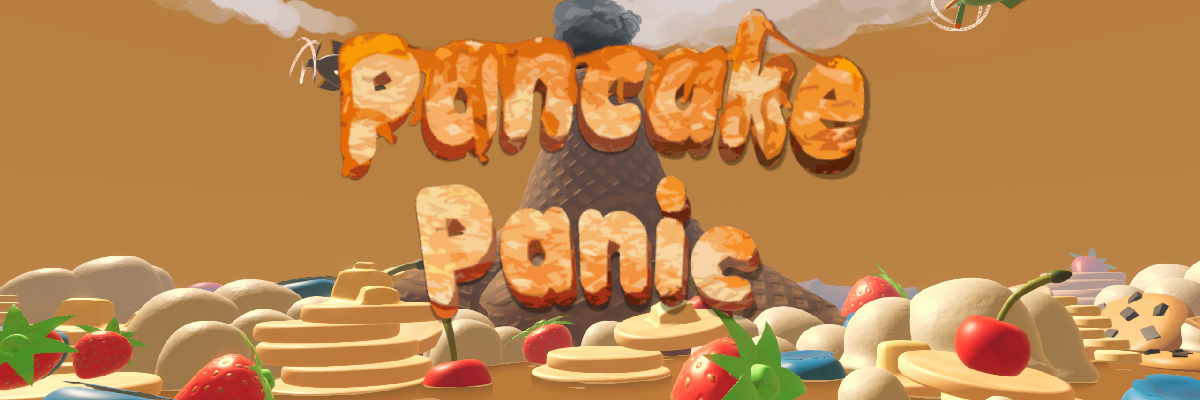
Project Overview
Description
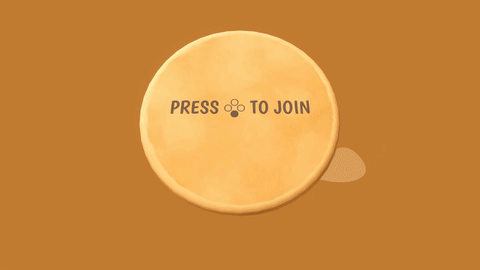 Pancake Panic! is a chaotic local multiplayer brawler game for 2-8 players, completed in 2021.
Pancake Panic! is a chaotic local multiplayer brawler game for 2-8 players, completed in 2021.
Players navigate procedurally rising and falling giant pancakes, while trying to
collect and throw their own mini pancakes at other players to knock them into hot syrup.
This project was developed over around 2 months with a team of 8 people: 1 programmer, 2 designers, 5 artists.
My role
As the only programmer on the team, all functionality in the game was implemented
by myself in some manner, while trying as much as possible to expose controls and tools to designers for creative control.
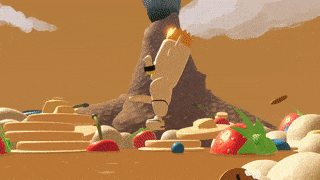 As the team member that pitched the idea, I was involved in many aspects of the game design,
and helped drive the project towards prioritizing fun through player-player interactions. I drafted many
ideas that are reflected in the final product, such as the world-space main menu acting as a tutorial,
and the scoreboard design, which aims to retain the gameplay's whackiness while highlighting player individuality.
As the team member that pitched the idea, I was involved in many aspects of the game design,
and helped drive the project towards prioritizing fun through player-player interactions. I drafted many
ideas that are reflected in the final product, such as the world-space main menu acting as a tutorial,
and the scoreboard design, which aims to retain the gameplay's whackiness while highlighting player individuality.
Development Learnings
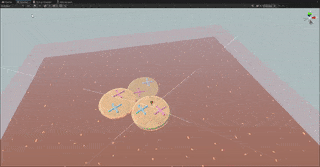 Aside from teaching me so many technical aspects within the engine, and team workflow with Unity and Git,
one of the biggest lessons I learned from developing Pancake Panic! is how helpful it can be to create with other people in mind - both players and developers.
By building assets, scripts, levels, UI, etc., in a modular fashion, and placing emphasis on documenting our work,
our team was able to easily adapt as our scope evolved, and could more easily adjust according to player feedback.
Aside from teaching me so many technical aspects within the engine, and team workflow with Unity and Git,
one of the biggest lessons I learned from developing Pancake Panic! is how helpful it can be to create with other people in mind - both players and developers.
By building assets, scripts, levels, UI, etc., in a modular fashion, and placing emphasis on documenting our work,
our team was able to easily adapt as our scope evolved, and could more easily adjust according to player feedback.
As an example, earlier in development, our game was designed around 2-4 players, with greater emphasis on race mechanics.
After playtesting showed us that the chaotic gameplay was what kept players engaged, we were able to lean more heavily into
being a brawler, and could programatically/procedurally change aspects of the level layout, player count and menu flow to compliment that shift
in direction, while dynamically balancing elements such as camera handling and the play area size according to player count.
Design Learnings
On top of the learnings described above, this project reinforced to me the importance of deliberately utilizing the limitations of your project.
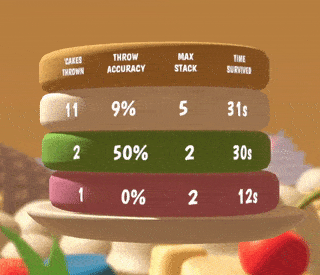 To the left is a small example of how the limitation of not having player names lead to our wiggle identification feature on the scoreboard, which
itself informed how we could easily have players vote to continue or drop-out after a round.
A much larger example of utilizing our limitations, though, is reflected in our entire concept. The primary reason our game was multiplayer
right from the start - and increased from 4 to 8 players during development - was that the interaction between players playing together can automatically
make the game fun, and distract them from any imperfections or imbalance that couldn't be resolved in the short development time.
To the left is a small example of how the limitation of not having player names lead to our wiggle identification feature on the scoreboard, which
itself informed how we could easily have players vote to continue or drop-out after a round.
A much larger example of utilizing our limitations, though, is reflected in our entire concept. The primary reason our game was multiplayer
right from the start - and increased from 4 to 8 players during development - was that the interaction between players playing together can automatically
make the game fun, and distract them from any imperfections or imbalance that couldn't be resolved in the short development time.
And of course, most importantly, I learned the importance of keeping development fun and looking after yourself during and after development! Here's a clip of
something that occurred early in development when I was testing movement feel while listening to music:
https://youtu.be/4zcvOCvVZ1A
Even though this music isn't in the game, the delight I had from this clip and seeing others laugh at it was itself motivation to continue sharing
progress, and making sure I was always able to laugh and enjoy the experience of making what we were making. This inspired
me to dedicate time to adding easter eggs under certain conditions most players would never see, but that would bring that same
sense of delight to those who do.
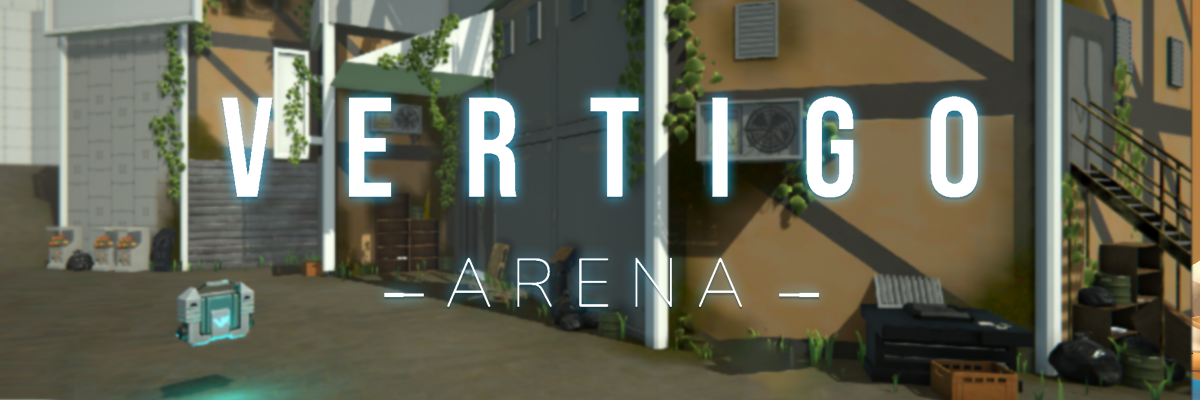
Project Overview
Description
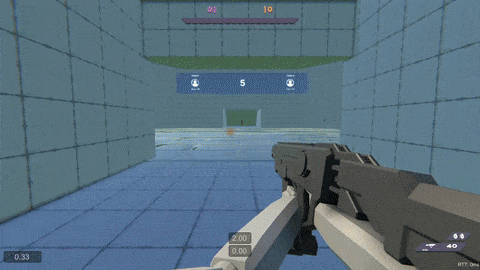 Vertigo: Arena is an online/LAN first person shooter for 4-8 players, currently in development and scheduled for completion in December 2022.
Vertigo: Arena is an online/LAN first person shooter for 4-8 players, currently in development and scheduled for completion in December 2022.
Players compete on two opposing teams in an arena to get the highest score, by defeating other players.
The game is designed around a short time-to-kill to maximize fun, and was designed to be a showcase piece for
everyone working on the project.
This project is currently in development with a team of 11 people: 2 programmers, 3 designers, 6 artists.
My role
After my sole programmer role on Pancake Panic!, I was keen for my role in this project to be more intertwined with the other
programmer on my team. Much of my work on this project so far has related to the general gameplay loop (including game state flow
and UI), as well as networked weapon and projectile simulation, chat functionality and more.
I'll be sure to have more of Vertigo: Arena to show soon, as it approaches the end of development!
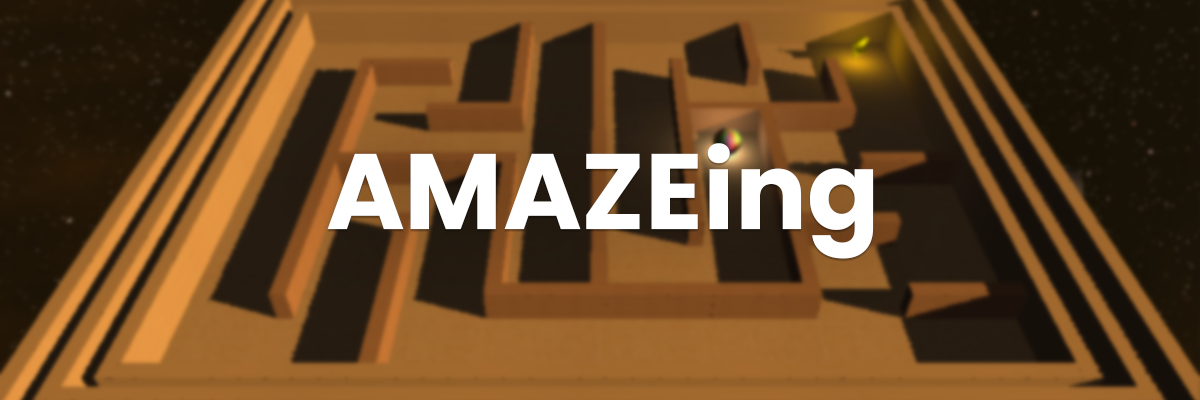
Project Overview
Description
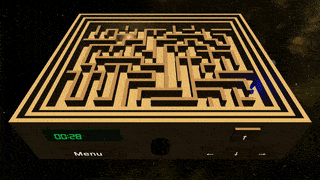 AMAZEing is a simple maze game made as a short cross-platform development exercise, completed in 2021.
Players guide a ball to collect all the gems in a procedurally-generated labyrinth maze, then reach the flag.
AMAZEing is a simple maze game made as a short cross-platform development exercise, completed in 2021.
Players guide a ball to collect all the gems in a procedurally-generated labyrinth maze, then reach the flag.
This project was developed for Android and WebGL in just a few weeks, by two programmers.
My role
Our roles were kept fairly generalized, and we both worked on all aspects of the game, including maze generation,
and managing inputs between mouse/touch/gyro.
I worked on the sliding drawer UI, and also experimented with achieving reasonably realistic marble physics and sounds by recording
real moving objects as a reference.
Learnings
This project was the first time I was directly involved in working with others, and it certainly impressed on me the value of communicating
with team mates, and using effective project management strategies. This was particularly important as we became locked down due to the COVID-19 pandemic
immediately prior to development, and had to ensure we could communicate and work effectively without being in person on what was by definition
a multi-device project.
In addition, this project made clearer to me some ways in which the platform can inform game design. It was important
to me to do more than just build the game for one platform and make sure it works on another, yet we didn't have the time budget to make
different versions.
As such, we settled on containing our maze within a box, which has large buttons on the front to represent keyboard keys. The iconography made it clear to players that
they could use keyboard controls, while the size and shape of the buttons made it clear it was suitable for mouse and touch. Creating this box
with inputs on the face also made it easier for
us to introduce players to where everything is in the game in a natural manner without using pop-ups - especially important for a small mobile device:
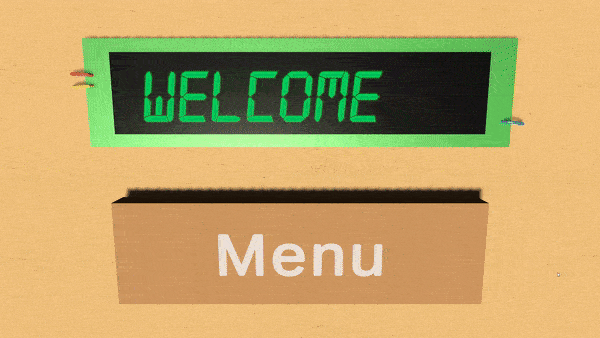 Links
Links
You can play/download AMAZEing from my itch.io site here!